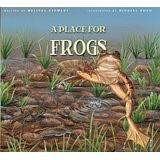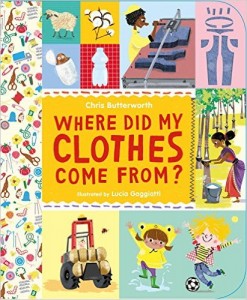Written by Melissa Stewart
Illustrated by Higgins Bond
Five thousand different species of frogs have been identified by scientists around the world. Several of the best known species of frogs are mentioned or illustrated in this book. However, the purpose of the book, and the series it belongs to, (A Place For…) is conservation.
The main story line is about how farm chemicals might harm frogs, changing plants in a natural habitat and even walking your dog can harm frogs. Because of the heavy preachy type of writing in this book, it should not be shelved with the true nonfiction books about frogs, but rather with the environmental conservation books.
Text insert boxes give true information as far as the life cycle of frogs and kinds of places or conditions where they lay their eggs. Several suggestions are made for helping frogs to survive, such as, watching out for them when you see them in a road. However, other suggestions are made without scientific basis. Statements like “scientists think…” are not the same as definitive research.
Teachers, parents and librarians might want to use this text in the lower grades of two and three for information about community and personal responsibility. However, it should not be used in the higher grades of four and five as the selected bibliography offers no actual scientific studies nor proof. This book will not meet any core curriculum standards aside from differentiating factual writing from persuasive writing. It should also be noted that this is an updated version of a book from 2009, and is not a new book.
 Title: A Place for Frogs
Title: A Place for Frogs- Author: Melissa Stewart
- Illustrator: Higgins Bond
- Publisher: Peachtree Books, 2016
- Reviewer: Elizabeth Swartz
- Format: Paperback, 32 pages
- ISBN: 978-1-56145-902-5
- Genre: Nonfiction
- Grade level: 2 to 5
- Extras: Frog Facts, inside front and back covers are maps showing regions of the world that are home to various frog species, bibliography, other books for recommended reading





